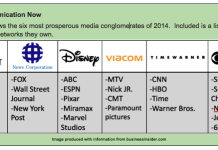From Wikipedia:
Planned obsolescence or built-in obsolescence in industrial design is a policy of planning or designing a product with an artificially limited useful life, so it will become obsolete, that is, unfashionable or no longer functional after a certain period of time.
I just bought a new printer. Printers aren’t as big a part of my life as they used to be, so I don’t really need an expensive high-tech printer anymore. The basic $50 model from Best Buy will do fine for me. But what we all know is that the real cost of affordable printers isn’t paid up front. It’s paid when we have to buy ink. It’s not unrealistic for the replacement ink for a printer to cost more than the printer itself.
So my printer, a Canon all-in-one that I love is out of ink. It’s December. Black Friday and holiday sales abound. Which is more practical for me — to buy ink? Or to just buy a new printer. I bought a new printer for $29.99. Yes, really. And of course, the ink to replace the ink that’s in the printer will cost easily $35 to $70.
I’ve decided to keep my old printer. I like it. I’m going to buy some ink online where I can get it for cheaper. I’ll set up the new printer for my kids.
This is an example of planned obsolescence. Canon or HP or whoever could easily and inexpensively install higher capacity ink cartridges, but why would they do that when we’ll all fairly quickly replace the ink with minimal complaint? We’re conditioned to just go buy ink. We grumble for a moment, but it doesn’t occur to us that we’re being manipulated.
But when the printer starts to get glitchy? I’m not going to pay to have it repaired. I’m going to buy a new one. It’s cheaper than the cost of repairs.
Let’s take this a step further and discuss products that actually wear out in a short period of time. Let’s talk about my toaster. We don’t make a lot of toast in our family, so we don’t need toasters with a lot of features. We don’t even need four slots. So when my older 10-year-old toaster (which was actually built to last) finally wore out, I bought a cheap replacement two-slice toaster for $15. A year later, my shiny new red toaster burned out. Keep in mind that we aren’t heavy toaster users. We use it a few times per week at most.
I believe my cheap toaster’s short lifespan was probably deliberate?planned obsolescence. Can I prove it? No. Will?I even try? No. It was easier for me to go buy another toaster. Again, it’s December, so I got one for $8.
Four types of planned obsolescence
1. Style obsolescence.?Example: the release of slightly updated products, such as the iPhone in different colors.
2. Systemic obsolescence. Examples: 1) needlessly eliminating backward comparability in products like software and video games, 2) adding charts or images?to textbooks that make it difficult for students to access full resources with an older edition of the same book.
3. Programmed obsolescence. Example: inkjet printer manufactures employment of smart chips in cartridges to keep them from being used past specific thresholds like number of pages or time,
4. Lifespan-limiting design.?Examples: 1) using soft metal in screws so that normal usage will more quickly?render the product inoperable, 2) putting heat-sensitive components adjacent to components that are expected to get hot.
Common examples of planned obsolescence
- Companies use inferior components in crucial places. Think screws, bolts, electrical wires, seams, etc…
- Irreplaceable batteries in various devices, including?smartphones, or batteries that are too expensive to be practically replaced.
- Disposable items that are designed to have a limited lifespan:?razor blades and ink cartridges
- College textbooks. Do you really think that an algebra textbook needs a new edition every year?
- Incompatibility: video games, gaming consoles, computer software.
- Electronic gadgets that faily to work with old accessories from the same manufacturer.
- Companies can use political or economic clout to purposely sell an inferior product or suppress a superior product from coming out. Example: Tesla and Edison (see video)
- Unavailable or expensive spare parts.
- Outrageous repair costs.
- Tamper-proof screws that require special screwdrivers.
- Cumbersome warranty procedures. If the hassle to replace something via warranty outweighs the value of the product, consumers are more likely to just replace the product.
But my mom’s washing machine lasted 20 years!
“Things just don’t last as long as they used to,” the saying goes. Another commonly heard phrase is “things always break a month after the warranty is up.” Both of these statements are often true, and it’s by design. It’s also cheaper for companies to make inferior products, of course, and cheap parts/components and planned obsolescence are happy bedfellows.
So where did this brilliant business strategy come from?
Here you go:
Want to read Bernard London’s entire paper? It’s available via?PDF, Scribd, and I’ve embedded a preview at the bottom of this article.
Is planned obsolescence just a new conspiracy theory?
No.?In 1960, cultural critic Vance Packard published the book The Waste Makers, which was promoted as “an expos? of the systematic attempt of business to make us wasteful, debt-ridden, permanently discontented individuals”.
In 1954 American industrial designer Brooks Stevens gave a speech titled “Planned Obsolescence”?at an advertising conference in Minneapolis. He defined the phrase as?”Instilling in the buyer the desire to own something a little newer, a little better, a little sooner than is necessary.”
It’s easy enough to prove that not only was planned obsolescence deliberate, it was actually touted as a smart business strategy.
Why planned obsolescence is a big deal — and it’s not just about our money.
A huge problem with planned obsolescence is that I’m not the only person with the idea to just buy a new toaster or printer when mine quit working. Most people have caught onto this and the discarded products are choking?our landfills. In addition to wasting consumers’ money, the manufacturing of these products drives up carbon emissions and other pollutants.
How can I?get around planned obsolescence?
One way is to buy quality products if you can afford them. Planned obsolescence usually works best when a company has an oligopoly, which means that a market for an item is dominated by a limited number of sellers. This isn’t always the case, however. What happens when there are a lot of manufacturers for a product is that the cost and quality of the items decrease drastically. You can buy a $10 backpack?at Walmart, for example, but we all know that the quality is going to be inferior to a quality backpack from?North Face that may cost $129.
What comes into play here is money, time, and convenience vs. immediate out-of pocket-expense. I may not have $129 in August when my kid needs a new backpack for school, but I will probably have $10. If I do have $129, however, I’ll buy the North Face backpack because I know that I’ll be buying three more cheap backpacks throughout the school year and it’s a hassle for me to have to do that and it’s a hassle for my kid to have his backpack break at school. The North Face backpack (I’m told) will last a lifetime. The problem is that many people will never be able to afford a North Face backpack. I’ve not bought one yet, but I plan to — when I can afford it.
For most products, there is a superior product that will last longer, but how many of us can afford them? You can search the web for ways around planned obsolescence by making things last longer — there are a lot of ethical (and even some unethical) hacks out there. Let your conscience be your guide.
Another way to resist planned obsolescence is to (gasp) refuse to upgrade. Classics on VHS, anyone? I did dishes by hand for many years in lieu of buying a replacement dishwasher. I “broke down” (pun intended) eventually, but I did save the cost of a couple of dishwashers in that time.
You can also learn to fix things, but again…money, time, convenience. Can you make these investments? Sometimes it’s practical and sometimes it’s not. Here is an article I wrote a few years ago about finding free online tutorials. Some of the information is dated, but the concept is sound. Fixing things can be fun, too, and I always feel I’m accomplishing something if I’m learning.
Watch the video below and be sure to scroll down to read “Ending the Depression Through Planned Obsolescence.”
London (1932) Ending the Depression Through Planned Obsolescence by sukiari
Let us know your thoughts at the Liberal America Facebook page. Sign up for our free daily newsletter to receive more great stories like this one.
Tiffany Willis is a fifth-generation Texan and the founder and editor-in-chief of Liberal America. An unapologetic member of the Christian Left, she has spent most of her career actively working with ?the least of these? and disadvantaged and oppressed populations. She’s passionate about their struggles. To stay on top of topics she discusses,?like her?Facebook page,?follow her on Twitter, or?connect with her via LinkedIn. She also has?a?grossly neglected personal blog?and a?literary quotes blog that is a labor of love. Find her somewhere and join the discussion.







